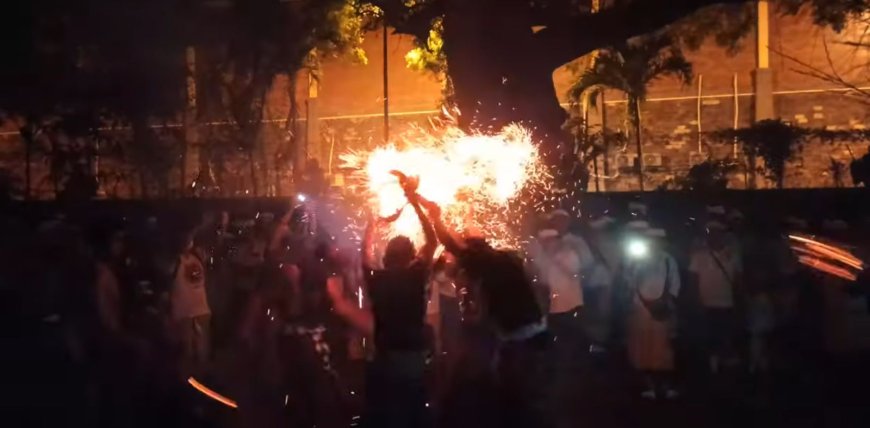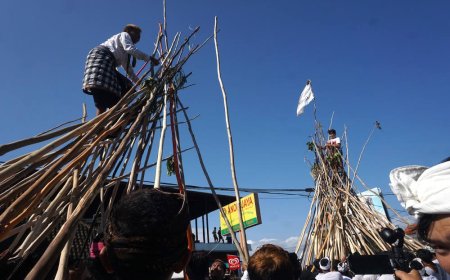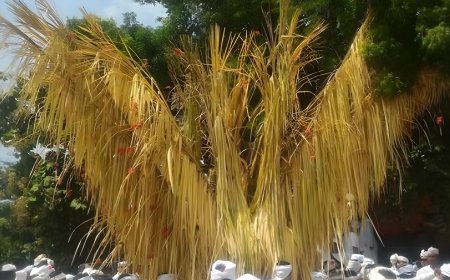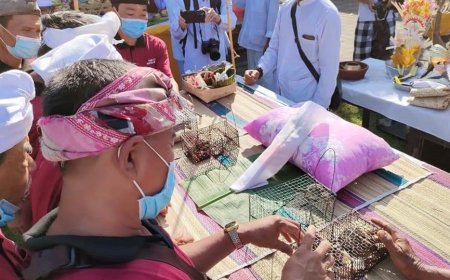Siat Geni: The Fire War Ritual to Dissolve Negative Elements
Siat Geni is a unique fire-fighting tradition in Desa Adat Tuban, Kuta, Bali, passed down through generations. Held annually in the fourth month of the Balinese calendar, it welcomes Kala Geni Rudra, the guardian of deities at Pura Dalem Kahyangan. The event involves young men from two village groups, Sekaa Teruna Pertiwi Santi and Sekaa Teruna Bhuana Kusuma, who battle with burning coconut husks, symbolizing a clash of fire against fire.

A unique tradition in Tuban Traditional Village, Kuta District, Badung, Bali, called "Siat Geni," or "fire war." This tradition has been passed down through generations and is still preserved and introduced to the younger generation today. Siat Geni is held to welcome Kala Geni Rudra, aiming to neutralize, destroy, or eliminate any negative or bad aura in the village, including disease, plagues, and other problems.
Fire Battle Using Burning Coconut Husk ( Photo Source: Personal Collection )
Siat Geni is a ritual to welcome the guardian or companion of the gods and goddesses residing in Pura Dalem Kahyangan, known as Kala Geni Rudra. This guardian is believed to love fire, making Siat Geni a necessary offering to Kala Geni Rudra. Its purpose is to neutralize negative auras and bring positive effects to the life of the Tuban community. As the name suggests, Siat Geni involves a fire war, where participants use burning coconut husks. These husks, containing embers, are struck against each other above the heads of the participants, causing sparks to fly. The participants of Siat Geni are the youth of Tuban Traditional Village, specifically from Sekaa Teruna Pertiwi Santi Banjar Tuban Griya and Sekaa Teruna Bhuana Kusuma Banjar Pesalakan.
Fire Battle Procession ( Photo Source: Personal Collection )
The Siat Geni tradition is held once a year, specifically in the fourth month of the Balinese calendar. During the performance, participants wear black clothes, kamen (traditional sarong), and udeng (headgear). They engage in one-on-one battles, though sometimes two-on-two matches are held. Despite using fire, the battles do not cause serious injuries to the participants. Additionally, the participants hold no grudges against their opponents.
During the event, the participants are divided into two opposing groups in a small circular formation. The procession is led by a "saye" or referee, ensuring that the ritual proceeds with reverence and purity. Before the event begins, participants must offer prayers and undergo the matur piuning ritual, led by Pemangku Pura Gede Dalem Kahyangan. The coconut husks, arranged in the middle of the temple’s courtyard, are lit on fire as a symbolic start to the tradition. The ritual lasts for approximately one hour, and participants must be in a state of purity, free from any form of impurity—such as no recent deaths in the family or babies younger than 1 month and 7 days. Clean ethics and a pure heart are also essential, with the goal of burning away evil desires within oneself. This ritual is not about a battle between humans and fire but rather fire against fire, symbolizing the removal of inner impurities or spiritual pollution.
































































